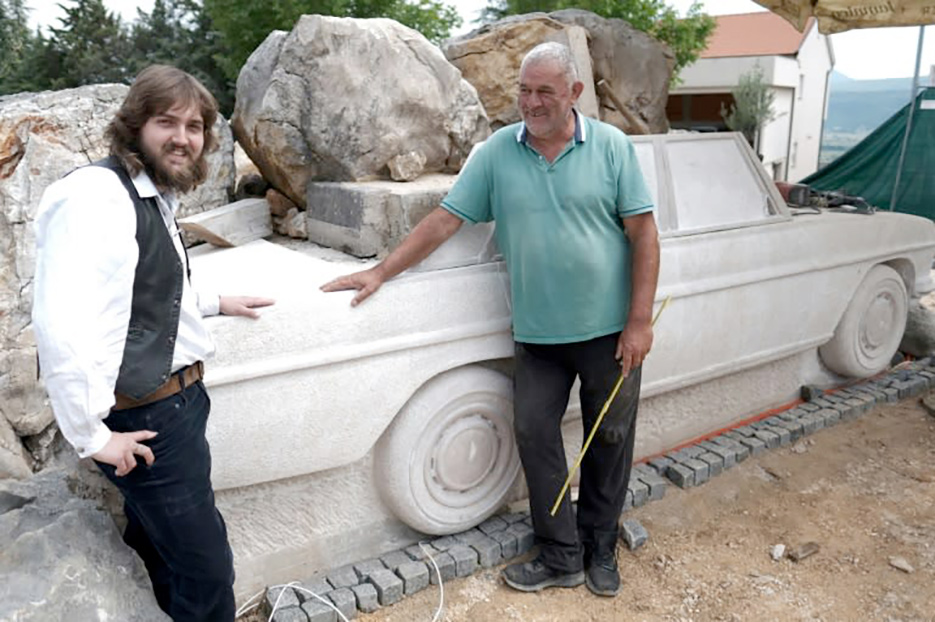Croatia’s Mercedes Monument Honors Emigrants
Like a mini Mount Rushmore, a vintage Mercedes is emerging from a pile of limestone boulders on the edge of a small Croatian town.
The life-sized sculpture is a homage to thousands of emigrants who proudly returned home from Germany at the wheel of the ultimate status symbol.
Like many poorer areas across southeast Europe and Turkey, Imotski sent thousands of its sons and daughters to work in Germany as “gastarbeiters” or guest workers in the 1960s and 1970s.
And those that returned home driving a Mercedes-Benz were seen as having made it.
 |
|
Ivan Topic (right) and sculpture student Fran Marko Vlahinic next to their creation of a life-sized classic Mercedes. |
“It was a symbol of success, anyone who had one could have his pick of girlfriends, sit in the front row in church,” said Ivan Topic, who worked in construction in Frankfurt for 18 years before returning to Imotski in 1997.
Topic came up with the idea for the monument, arguing that the rugged endurance of the ageless “Minika” – as the classic 1960s W115 saloon is called here – mirrors the qualities of the rocky region’s people.
“That car was way ahead of its time, and it’s modern even today,” he told AFP as he helped workers put the final touches to the statue in local white karst stone.
The people of Imotski remain huge fans of the brand. Half of the area’s 16,000 registered vehicles are Mercedes.
As well as being a synonym of success, Mercedes-Benz has become deeply embedded in the identity of the region and its people, said Mislav Rebic, who came up with the design.
The poor agricultural area close to Bosnian border had been marked by emigration for decades, something that continues even today.
In the 1970s nearly a fifth of Imotski’s population was working abroad with some 9,000 living in Germany alone.
“They left looking to work to buy a cow, a bicycle,” Topic told AFP. But as the area’s road network developed, they brought back cars.
“They would buy a Mercedes, drive it back home and leave it as an inheritance.
“Mercedes is something we bought and left to our children and they will leave it to theirs,” he said.
Given the cult of the Merc, Topic said it was obvious to him that a statue of the iconic model would be the perfect show of gratitude for the sacrifices the region’s migrants made.
He knows a thing or two about the cars. He owns several himself, including a 1929 model, and heads the Imotski Mercedes Club, which has an impressive 230 members.
‘You’ve Made It’
But initially not everyone shared his enthusiasm and it took several years for the idea to build up speed.
However, as soon as work started, interest in the unusual monument quickly spread, even beyond Croatia’s borders.
In February, several young sculptors from Croatia, Denmark and Slovenia came to work for a week on the monument.
Nediljko Djuka, a returnee from Australia, hailed the statue.
“Mercedes symbolizes safety and our people, who emerged from this (karst) stone,” he said.
Stipan Busic, who helped with the monument, said there is nothing else like it anywhere in the world.
“Here a Mercedes means everything. When you buy one, you can be at peace – ‘You’ve made it!’” said Busic, who has three himself.